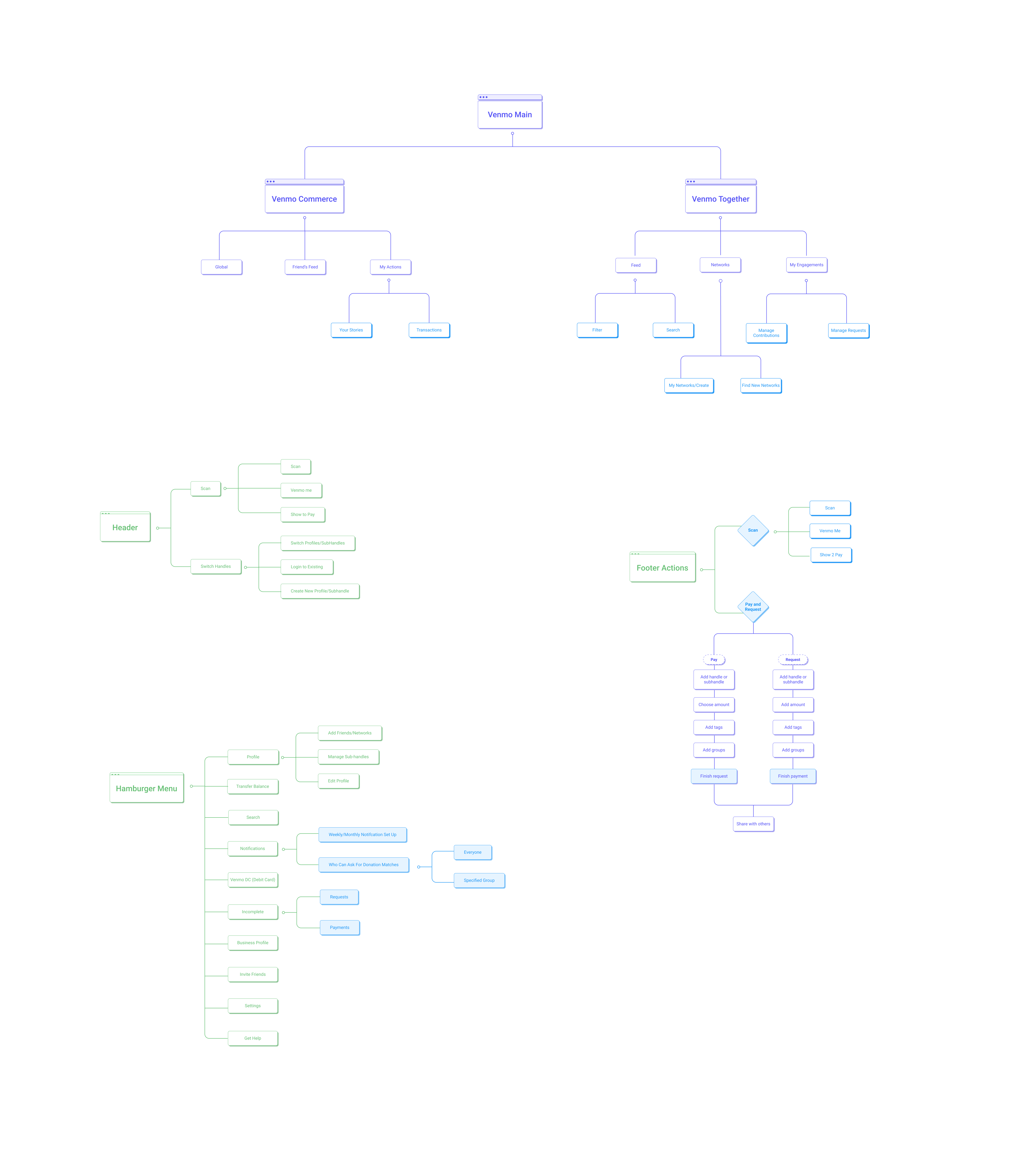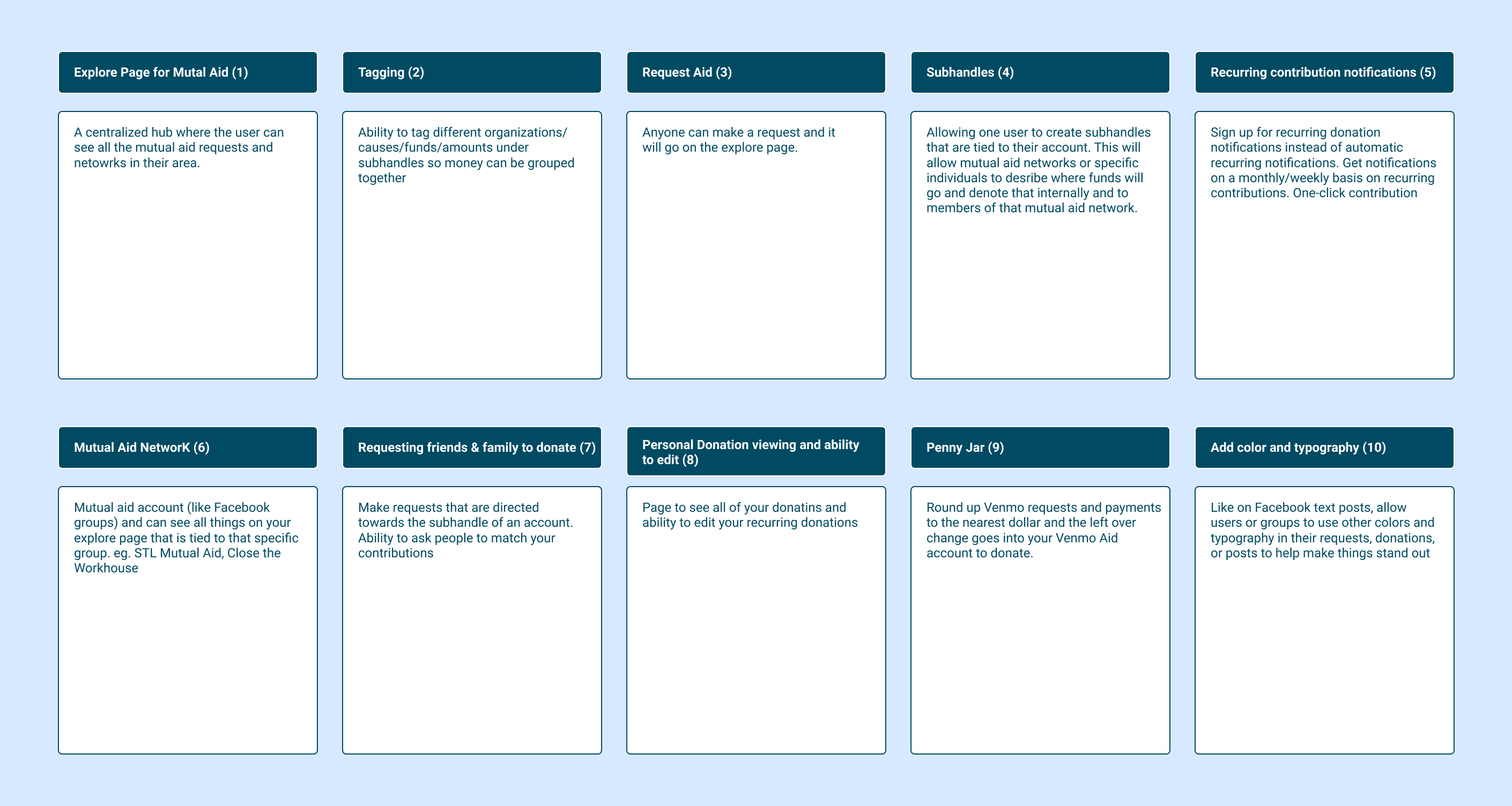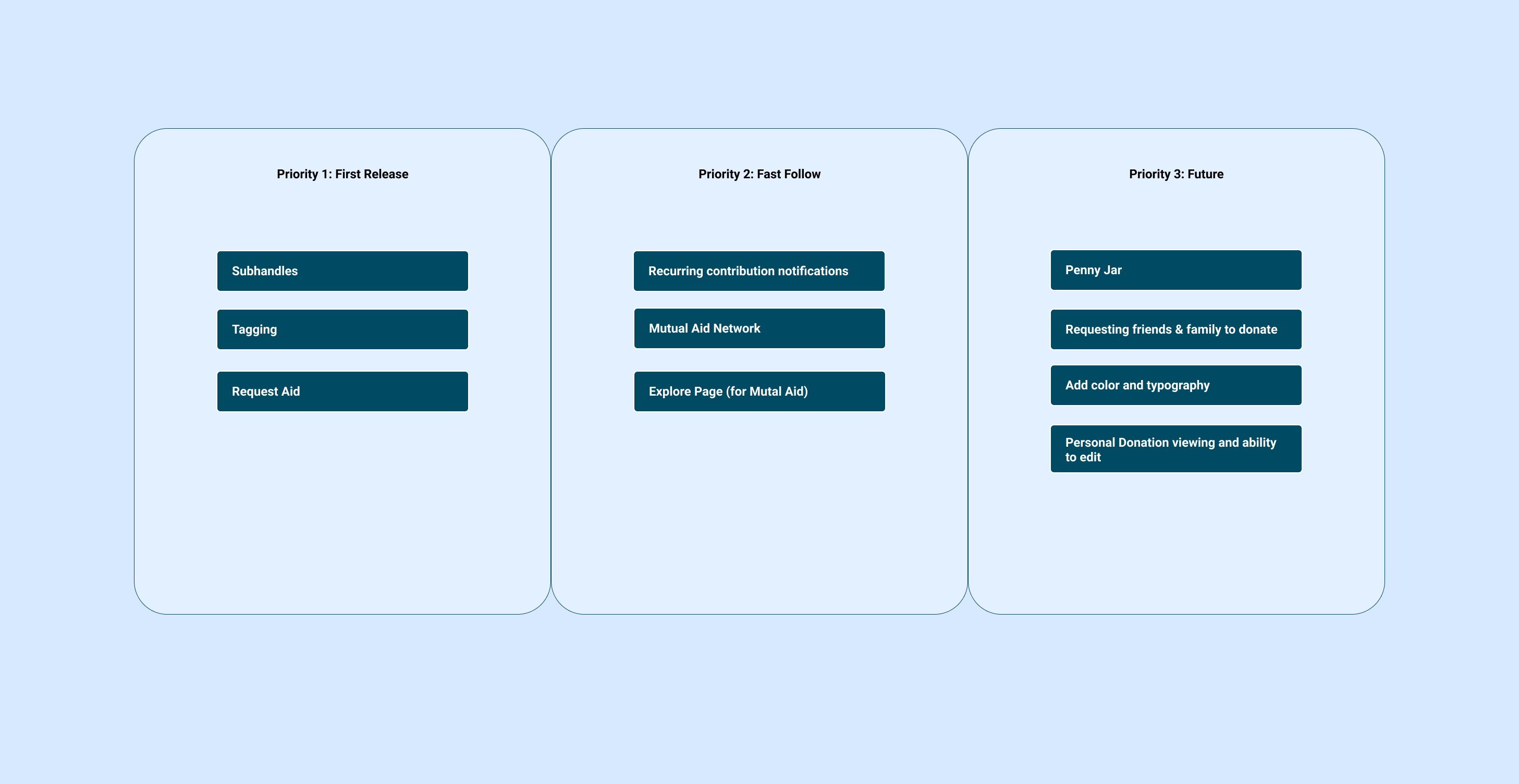Venmo: Together
MAY 2021
UX Research and Strategy
St. Louis, MO
Collaborators: Miles Lee and Rachel Zemser
PDF Presentation of Case Study
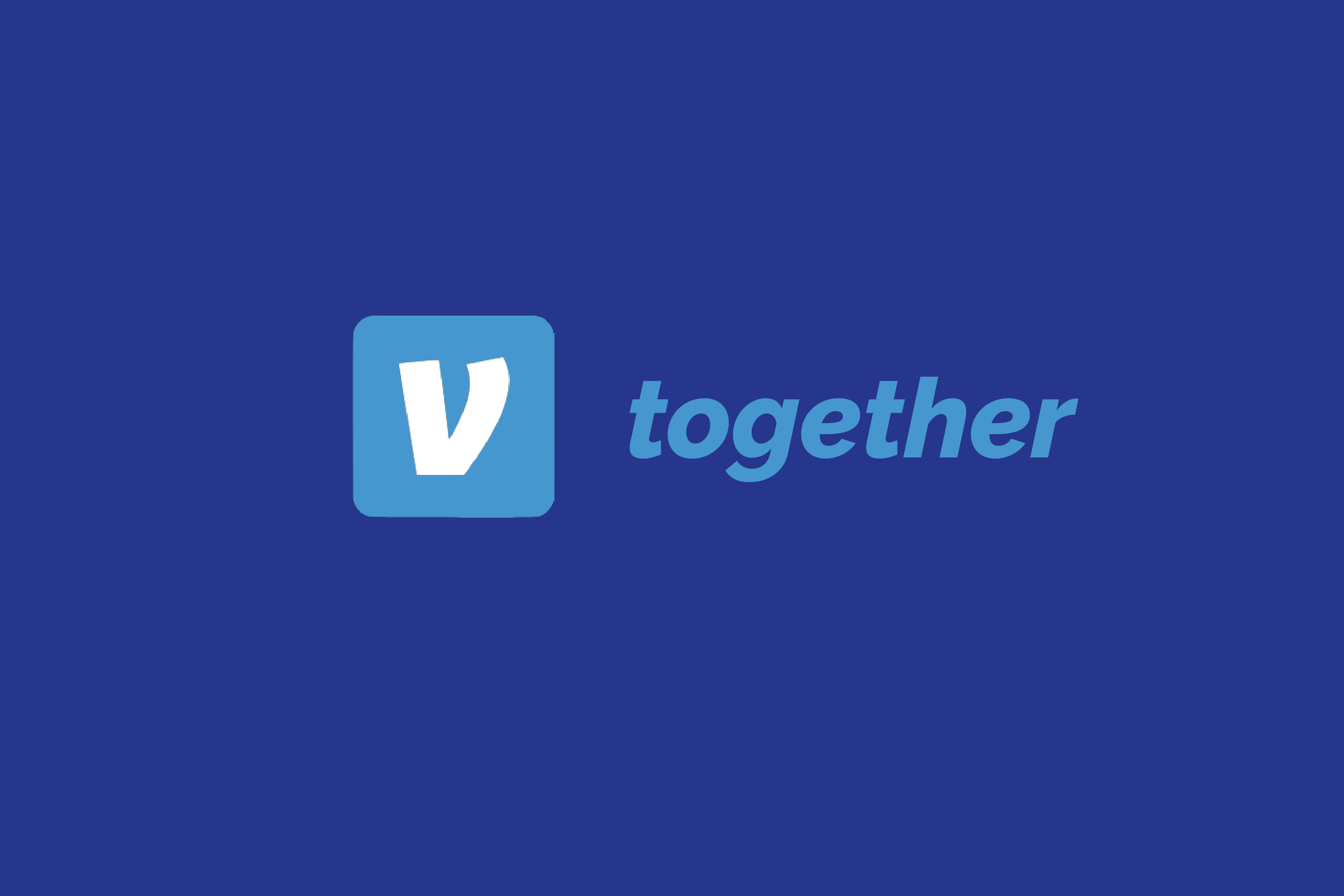
Problem
As mutual aid has become more prevalent since the start of the COVID-19 pandmic, several problems have arisen in its mass use and understanding. The process of engaging with mutual aid is disjointed and many who engage, especially via social media, see it as charity and not solidarity.
As mutual aid has become more prevalent since the start of the COVID-19 pandmic, several problems have arisen in its mass use and understanding. The process of engaging with mutual aid is disjointed and many who engage, especially via social media, see it as charity and not solidarity.
Key Insight
We did not have the time and resources to explore non-digital and non-monetary forms of MA engagement. However, in the digital, monetary space, those who engage with MA resources needed a more centralized location to find funds to engage with and to manage their contributions/requests within said funds.
We did not have the time and resources to explore non-digital and non-monetary forms of MA engagement. However, in the digital, monetary space, those who engage with MA resources needed a more centralized location to find funds to engage with and to manage their contributions/requests within said funds.
Solution
With venmo being the most common hub for monetray transactions within MA, we developed a second platform within the venmo app, venmo: together. Within this feature, users can discover MA funds, manage recurring contributions, request monetary, request friends contribute to a fund, and more.
With venmo being the most common hub for monetray transactions within MA, we developed a second platform within the venmo app, venmo: together. Within this feature, users can discover MA funds, manage recurring contributions, request monetary, request friends contribute to a fund, and more.
Our Approach
Research
9 User Interviews
38 Survery Respondants
9 Competitive Analyses
6 Breakup/Love Letters
9 User Interviews
38 Survery Respondants
9 Competitive Analyses
6 Breakup/Love Letters
Synthesis
Collaborative Affinity Map
3 Empathy Maps
3 User Journeys
3 User Need Statements
3 8-Box Brainstorms
Collaborative Affinity Map
3 Empathy Maps
3 User Journeys
3 User Need Statements
3 8-Box Brainstorms
Outputs
Project Roadmap
App Map
User Flow Diagram
Project Roadmap
App Map
User Flow Diagram
Research
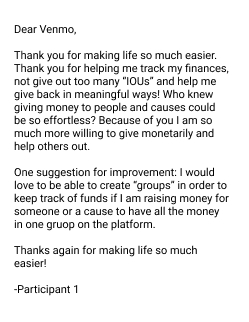

Through our research, we started broad on the topic mutual aid for our interviews and survey, and then narrowed in on digital platforms of mutual aid engagement. We recognized that the resources of time, networks, and energy limited us to exploring digital forms of mutual aid (although this does not cover the full scope of MA). Through Break Up/Love Letters we were able to get a better sense of what platforms people used and what their favorite parts or major pain points were with them. People specifically wanted to be in networks or groups of specific types of mutual aid and more control over where their funds went, in order to have more equitable reach.
Synthesis
Through the process of affinity mapping and subsequent empathy maps, jounrey maps, and user need statements, we synthesized all of the varied forms of data from our initial research. Some themes that came up were: the perceptions of mutual aid, successful fundraising and MA request strategies, and the ways in which people decide how much and where to engage their funds with. This led to the user need statements of: “Young adults who engage in mutual aid primarily through social media need to be presented with more variance in who, when, and how to provide aid in order to distribute aid that corresponds better with all the needs of the community.”



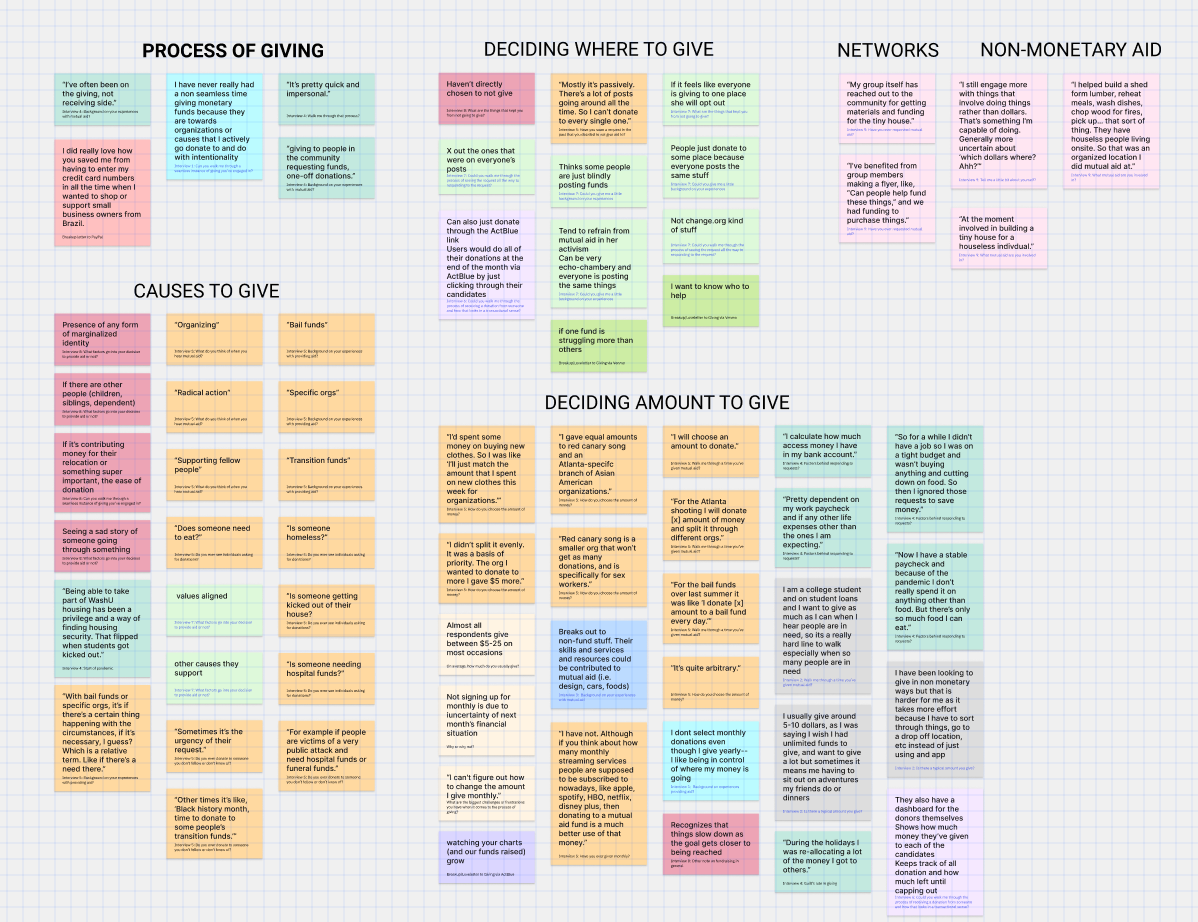

Ideation

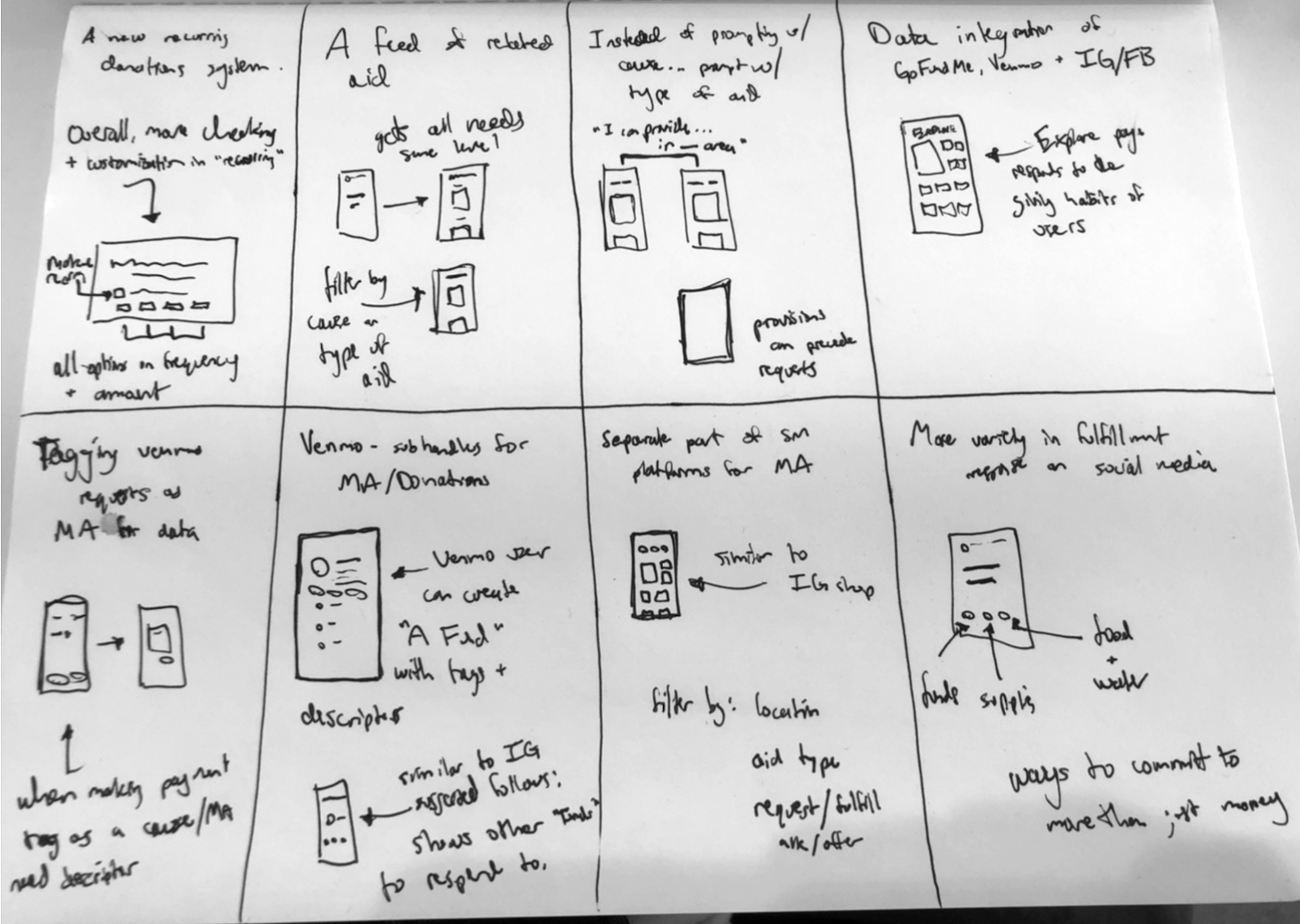
Each of the three of us completed an independent 8-box brainstorm (see left) to generate ideas for how to best fulfill the above user-need statement. Centering on the Design Justice Principle 10 of looking to what is already being used and working, we decided to re-design an existing platofrm currently in use: Venmo. After discussing our solutions, we settled on the idea of revamping Venmo with a new product feature. Venmo: Together would use several of the ideas we generated (customizable recurring contributions, requesting freinds contribute, MA netwroks, and a discover a fund feed) to create a robust mutual aid engagement platform in the digital space.
Final Outputs
In order to effectively communicate our idea for this new facet of Venmo, we put together a Project Rodamap (with the list of 10 core features and their respective priority in development), an App Map (showcasing the underlying structure of the app as a whole), and an example User Flow Diagram (displaying the steps a user would take in the app to complete a contribution). The final outputs are viewable below. For a more detailed overview of our research and strategy view this PDF Case Study.
